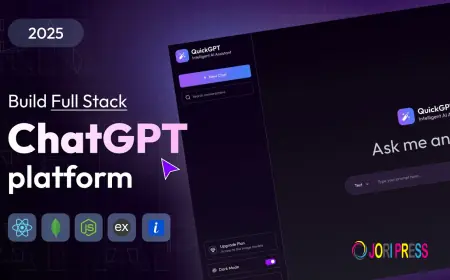The Rise of Industry-Specific Schematic Platforms: What It Means for You
In this blog, we’ll explore what the rise of specialized platforms like XTEN-AV means for professionals who rely on schematic software—and why now is the right time to make the switch.

For decades, electrical and AV professionals have relied on general-purpose design tools to create schematics. While these platforms served a basic need, they often required extensive customization, lacked domain-specific features, and left engineers spending countless hours adapting the tools to their industry requirements. Today, that landscape is changing. The emergence of industry-specific schematic platforms is revolutionizing the way professionals design, collaborate, and deliver projects.
At the forefront of this evolution is XTEN-AV, a specialized platform built from the ground up for AV system designers, low-voltage engineers, and technology integrators. Unlike traditional tools that require workarounds for real-world use cases, XTEN-AV understands the industry’s language, workflow, and expectations. In this blog, we’ll explore what the rise of specialized platforms like XTEN-AV means for professionals who rely on schematic software—and why now is the right time to make the switch.
The Problem with One-Size-Fits-All Schematic Tools
Generic CAD tools like AutoCAD or Visio have long been used for schematic design across various industries. They offer drawing tools, symbol libraries, and basic layout functions. But for professionals in AV, electrical, or automation fields, these platforms fall short in key areas:
-
No real-world product data
-
Manual port and wire configuration
-
Limited automation
-
Lack of industry compliance support
-
No built-in BOM or cable schedule generation
-
Inefficient collaboration options
The result? Professionals are forced to spend hours doing repetitive tasks, creating their own templates, and cross-referencing data sheets just to get a functional design. This approach leads to slower delivery, higher error rates, and difficulty scaling across multiple projects.
XTEN-AV: Built for AV and Low-Voltage Design
XTEN-AV changes the game by offering a schematic software platform that speaks the language of the AV and electrical industries. From the moment you start a project, you’re working with intelligent tools designed for your specific needs.
Key benefits of XTEN-AV include:
-
Drag-and-drop placement of real-world AV and electrical components
-
Auto-routing and port-level intelligence
-
Automatic cable labeling and wiring schedules
-
Error validation for open connections and incompatible devices
-
Built-in bill of materials (BOM) generation
-
Scalable cloud-based collaboration
-
Compliance with industry standards and drawing practices
This type of precision, efficiency, and domain-specific focus is simply not possible with general CAD tools.
Why Industry-Specific Platforms Are Rising
The shift toward specialized schematic software like XTEN-AV is being driven by several key trends:
1. Increased Complexity in Systems
Modern AV and electrical systems now involve network integration, control protocols, smart sensors, and IoT devices. Designing such systems requires a tool that understands product compatibility, signal types, and wiring logic out of the box.
2. Demand for Faster Project Turnarounds
Clients and integrators expect rapid design cycles. General tools slow things down with manual processes. Industry-specific platforms offer automation that cuts design time from hours to minutes.
3. Remote Collaboration and Global Teams
With distributed teams now the norm, cloud-based schematic platforms like XTEN-AV make it easy for engineers, project managers, and technicians to collaborate in real time, no matter where they are.
4. Emphasis on Documentation and Accuracy
Installers, clients, and inspectors rely on accurate documentation. Industry-focused tools generate clean wiring diagrams, cable schedules, and BOMs directly from the design—eliminating transcription errors and saving time.
Real-World Impact: How XTEN-AV Improves Project Workflow
Let’s look at a practical example. Suppose a systems integrator is designing a digital signage solution for a multi-campus university. The design includes:
-
Touchscreen displays
-
HDMI extenders
-
Network switches
-
Control processors
-
Power sequencing units
With XTEN-AV, the integrator can:
-
Choose real parts from a product library that includes port types and technical specs
-
Drag and drop those devices into the schematic
-
Auto-route wiring connections with correct signal labels
-
Generate a full cable schedule and BOM
-
Share the project with the field team instantly for installation
The entire process is not only faster but also more accurate than using a traditional drawing tool. There’s no manual port mapping or external spreadsheet for cables—it’s all built in.
How This Trend Benefits Engineers and Designers
Industry-specific schematic platforms like XTEN-AV are reshaping the role of design professionals in several ways:
✅ Reduced Design Time
Smart templates, reusable blocks, and automated connections mean faster project turnarounds.
✅ Increased Accuracy
Built-in validation tools catch errors before they hit the job site.
✅ Better Team Collaboration
Cloud-based platforms allow multiple users to view, comment on, and update the design together.
✅ Easier Training and Onboarding
New team members can learn the platform quickly, thanks to industry-focused tools and libraries.
✅ Professional Output
High-quality diagrams and reports meet client expectations and regulatory standards.
The Future of Schematic Software Is Specialized
As industries evolve, the tools used to design their systems must evolve as well. The days of using generic CAD software to manually build complex AV or electrical schematics are fading. Specialized platforms like XTEN-AV offer a smarter, faster, and more accurate path forward.
The rise of industry-specific schematic software doesn’t just improve design—it changes the entire project lifecycle, from planning and installation to maintenance and upgrades. Clients receive better documentation, teams collaborate more effectively, and companies can scale operations with confidence.
Conclusion
The shift toward specialized schematic platforms is not a passing trend—it’s the future of system design. Tools like XTEN-AV are proving that when software is built specifically for your industry, the results are transformational. You no longer have to waste time reconfiguring general-purpose tools or second-guessing your wiring plan.
If your workflow still relies on outdated or generic design software, now is the time to upgrade. Embrace the power of intelligent, industry-specific schematic software and see how platforms like XTEN-AV can improve your speed, precision, and project success rate.
Read more: https://bizdirectoryhub.com/automating-repetitive-design-tasks-with-ai-powered-schematic-software/
What's Your Reaction?
 Like
0
Like
0
 Dislike
0
Dislike
0
 Love
0
Love
0
 Funny
0
Funny
0
 Angry
0
Angry
0
 Sad
0
Sad
0
 Wow
0
Wow
0















































